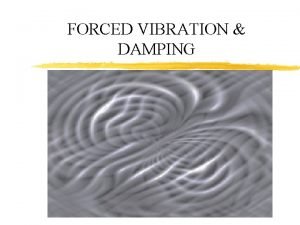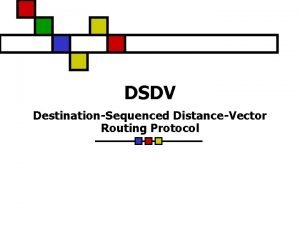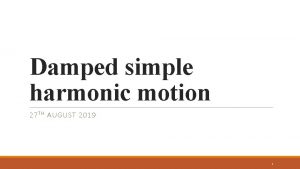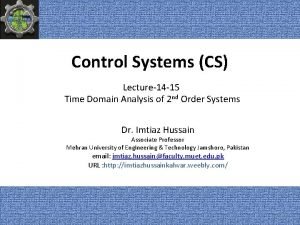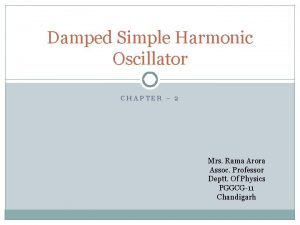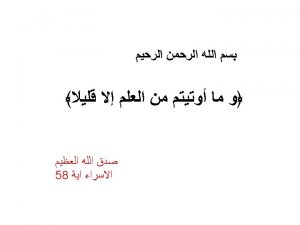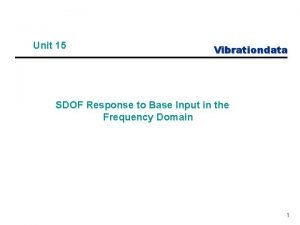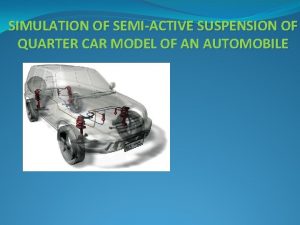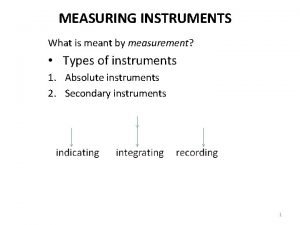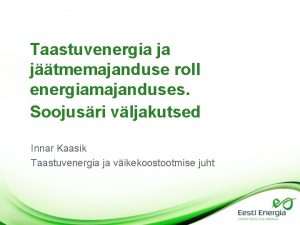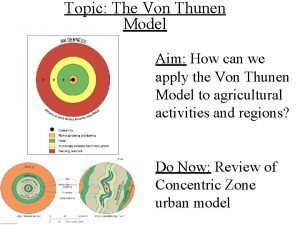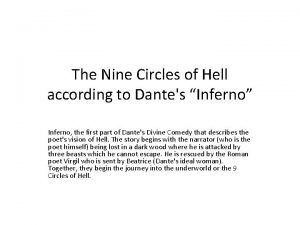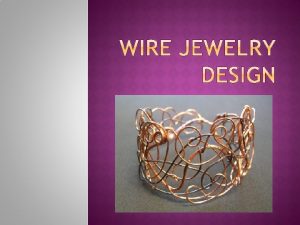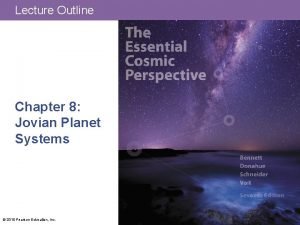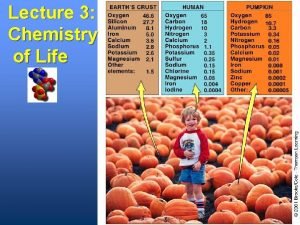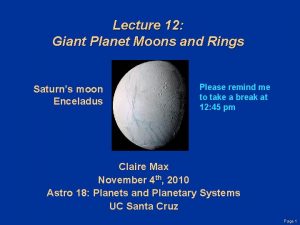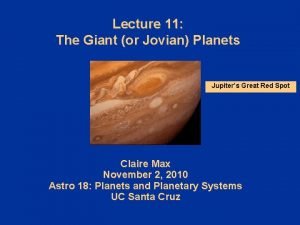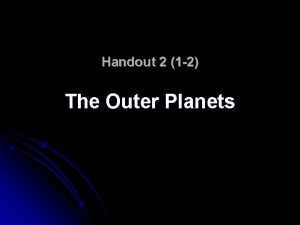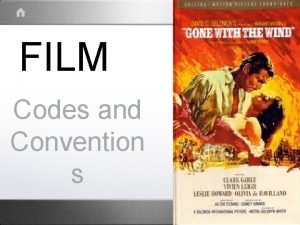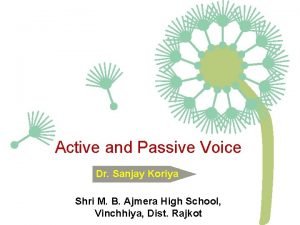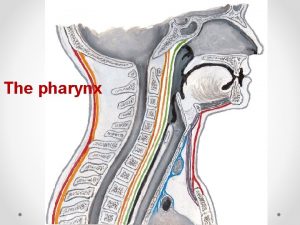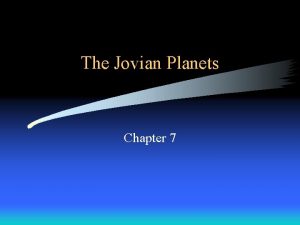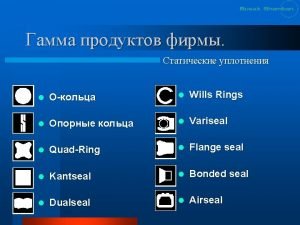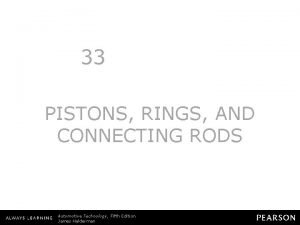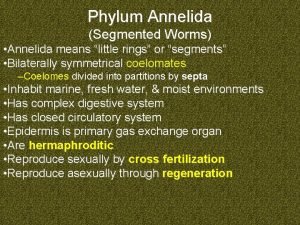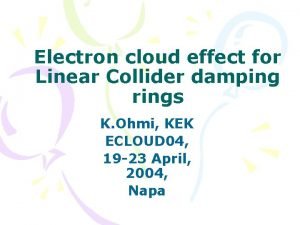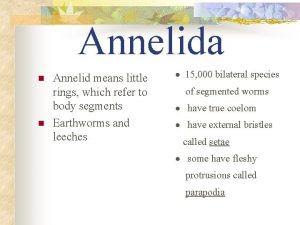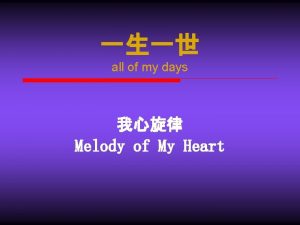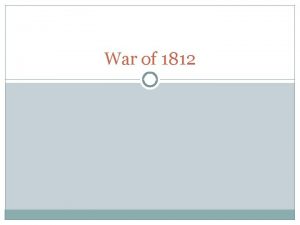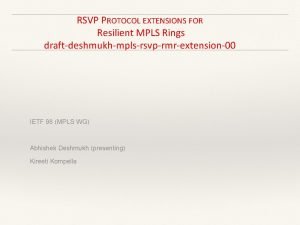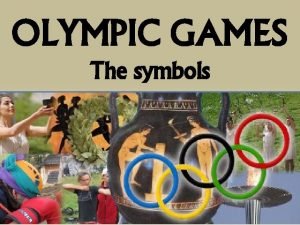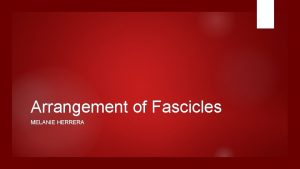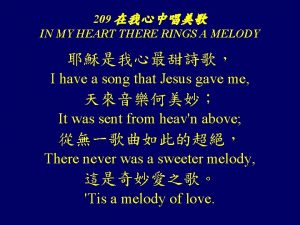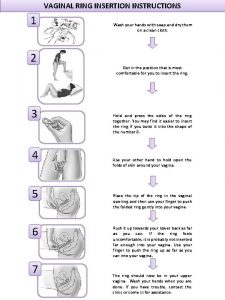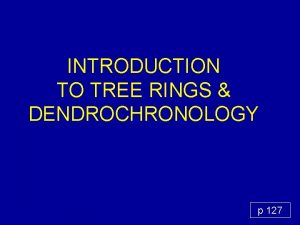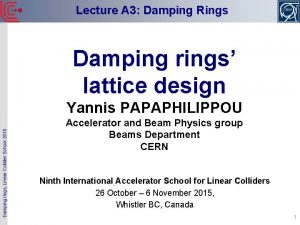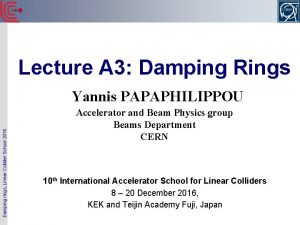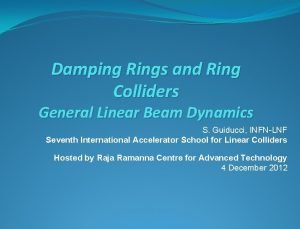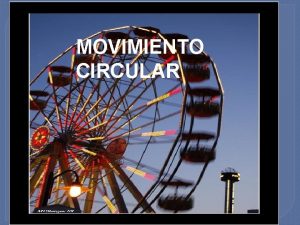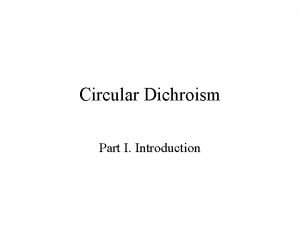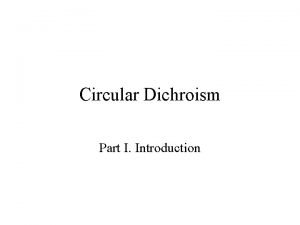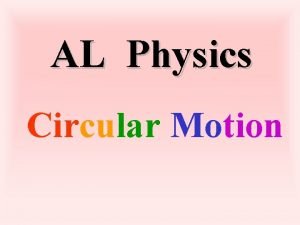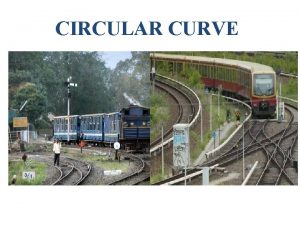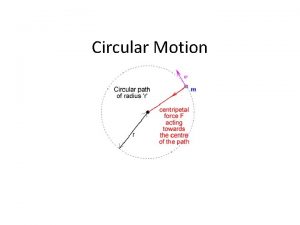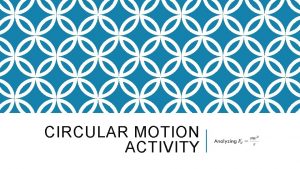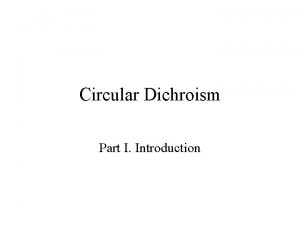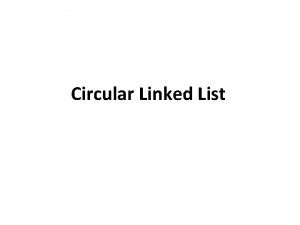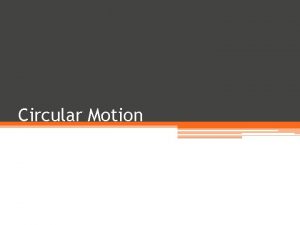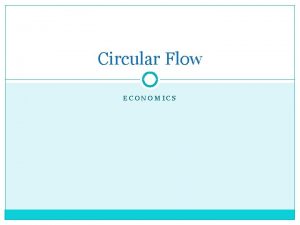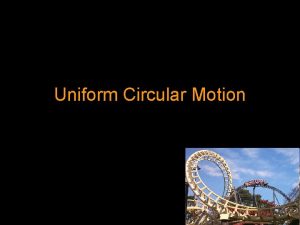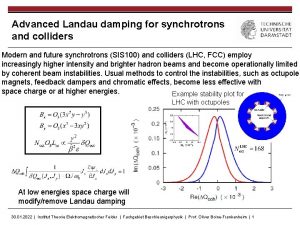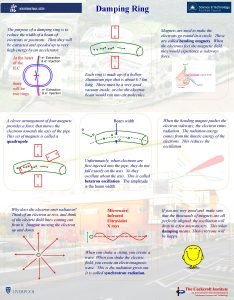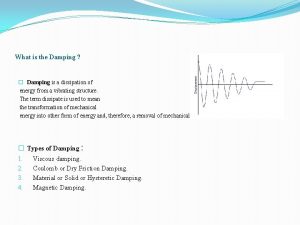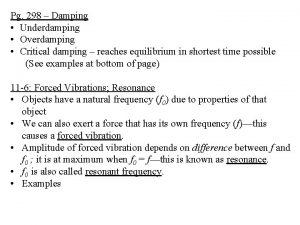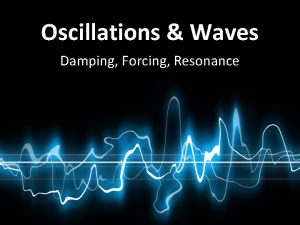Damping Rings Lesson 8 e e Circular Colliders




























































- Slides: 60

Damping Rings + Lesson 8 – e e Circular Colliders S. Guiducci, INFN-LNF Seventh International Accelerator School for Linear Colliders Hosted by Raja Ramanna Centre for Advanced Technology 27 November – 8 December 2012 Version 1 – 16 -Nov-12

Outline Basics concepts of circular colliders: luminosity tune shifts Main design criteria and challenges of the high luminosity and high energy colliders including: different collision schemes luminosity optimization beam lifetimes examples of colliders achievements and design choices for future colliders 2

World e+e- colliders luminosity Super Factories Super. B Linear colliders Factories B-Factories Future Colliders 3

World e+e- colliders luminosity plot Two regions: High luminosity frontier Factories, high precision physics measurements High energy frontier Discovery measurements Before Higgs LEP 2 latest circular collider Next is a linear collider ILC or CLIC After LHC Higgs discovery at E = 126 Ge. V Many proposals for a “Higgs Factory” circular collider (still at “brainstorming” level) 4

A Circle? • At Snowmass 2001, all options for after-the-LHC were on the table: Ø Ø Ø • Linear e+e. Circular e+e. VLHC Muon collider High intensity proton source (aka Proton Driver) In the following years, ICFA played a leading role in making the choice: Ø The next one would be an e+e- collider Ø It would be a linear e+e- collider Ø It would be a cold linear e+e- collider • • And the world HEP community followed faithfully However, the debate seemed to come back again after July 4, 2012: Ø The discovery of a Higgs boson may justify a dedicated Higgs Factory Ø The low Higgs mass (126 Ge. V) makes a circular Higgs Factory possible Ø Even a warm Higgs factory is not bad Weiren Chou, HF 2012, Accelerators for a Higgs Factory, Fermilab, 14 -16 November 2012 5

Comparison Table – Circular Higgs Factories Weiren Chou, Accelerators for a Higgs Factory, Fermilab, 14 -16 November 2012 6

Luminosity The Luminosity L is a measure of the probability of particle encounters per unit area per second in a collision process Given the cross section of a physics process sphys the counting rate of a physics event is R [s-1] = sphys [cm-2] L [cm-2 s-1] 7

Luminosity For head-on collisions, bunched beams of opposite charge, Gaussian charge distributions, L can be written as: fcoll = nbf 0 = collision frequency nb= number of bunches, f 0=revolution frequency N+, N- number of particles/bunch s*x, s*y transverse beam sizes at Interaction Point (IP) 4 ps*x s*y area of colliding beams To get high luminosity: Increase the collision frequency Increase the bunch density 8

Luminosity For head-on collisions, bunched beams of opposite charge, Gaussian charge distributions, L can be written as: fcoll = nbf 0 = collision frequency nb= number of bunches, f 0=revolution frequency N+, N- number of particles/bunch s*x, s*y transverse beam sizes at Interaction Point (IP) 4 ps*x s*y area of colliding beams To get high luminosity: Increase the collision frequency Increase the bunch density but Beam-beam effects pose a limitation on the maximum achievable bunch density 9

Beam-beam effects pose a limitation on the maximum achievable bunch density Particles in a bunch are strongly affected by the nonlinear field of the counter rotating bunches Increasing the bunch density produces beam blow-up and particle losses A measure of the strength of the beam-beam interaction is given by the linear beam-beam tune shift xx, xy It exists an empirical upper bound on xx, xy 10

Achieved beam-beam tune shifts From ICFA Lepton Colliders Database v 8 2005 (M. Biagini) KEKB has achieved x = 0. 127/0. 122, y = 0. 129/0. 090 and L = 210. 8 1032 cm-2/s 11

Achieved peak luminosities 0. 8 x 1033 The previous table is not up to date but is useful since it lists many useful parameters Here are the updated numbers for the peak luminosities 12 M. Zobov, IPAC 10

Beam-beam tune shift – Bassetti - Erskine formula The electric field of a gaussian bunch with N particles seen by a test particle in collision can be expressed in terms of the complex error function: For relativistic particles the electric and magnetic field are equal These expressions of the fields can be used in simulation programs to evaluate the beam-beam effects with realistic beam distributions The beam-beam interaction at large amplitudes is highly nonlinear For small amplitude particles it is characterized by a quadrupole-like force with focal length: The beam-beam tune shift is the first order approximation to the betatron tune change given by: x, y = *x, y Kx, y /(4 p) M. Bassetti, G. A. Erskine CERN-ISR-TH/80 -06 13

Beam-beam tune shift The beam-beam tune shift is given by: Inserting in the luminosity formula we get For flat beams and 14

Beam-beam tune shift Assume both tune shifts equal to the limit value i. e. kb=k At the b-b limit to further increase luminosity we can: Increase the current and the emittance keeping the tune shift constant Current is limited by the RF power available, vacuum system limits and beam instabilities Emittance is limited by vacuum chamber aperture and dynamic aperture Reduce by with challenges on the IR design and dynamic aperture Minimum y is limited by the hourglass effect 15

Hourglass effect: why short bunches? • In the drift near the IP: • • y(s) = y* + s 2/ y* To squeeze the vertical beam size, and increase Luminosity, y* at IP must be decreased This is efficient only if at the same time the bunch length is shortened to sz » y otherwise particles in the head and tail of the bunches will collide at a larger y 0, 1 b y* 1 mm 0, 08 5 mm 0, 06 0, 04 0, 02 2 cm 0 -0, 02 s (m) -0, 01 0 0, 01 Bunch length 0, 02 16

Low y insertion L* is the length of the drift between the IP and the first QD quadrupole focusing in the vertical plane (s) = * + s 2/ * max L*2/ * DAFNE L*=0. 3 m *= 6 mm QD quadrupole gradient = 26 T/m Super. B L*=0. 52 m max 15 m length = 0. 25 m *= 0. 21 mm QD quadrupole gradient = 100 T/m DAFNE - Siddharta IR Permanent Magnet max 1700 m length = 0. 3 m Superconducting 17

Super. B Final Focus sections “Spin rotator ” optics is replaced with a simpler matching section IP b* = 26 / 0. 25 mm Y-sext X-sext Crab Match HER Matching section is shorter than HER to provide space for SR optics IP b* = 32 / 0. 21 mm Y-sext LER X-sext Crab Match & Spin Rotator P. Raimondi L. Malisheva 18

Different collision schemes Single ring, few bunches, few IPs, head-on collisions (Aco, Adone, VEPPII, Spear, Petra, PEP, LEP, BEPC…? ) Exotic schemes (DCI (4 beams), Doris (first attempt with a vertical crossing angle), VEPP 2000 (round beams), CESR (pretzel orbit)) Double rings, multibunch, 1 IP, crossing angle Small Piwinski angle (Factories: PEPII, KEKB, DAFNE, BEPCII) Large Piwinski angle and crab waist (present DAFNE, Super. B, Super. KEKB, BINP t/charm proposal) 19

Single ring - head-on collision The number of IPs is 2 nb, twice the number of bunches Beam-beam sets a limit on the maximum tune shift in the ring: more IPs less luminosity per IP Therefore the number of bunches is small, ~1÷ 8, and the collision frequency is of the order of the revolution frequency Below beam-beam limit luminosity is proportional to the square of the particles per bunch N 2/ y Above beam-beam limit, luminosity increases linearly with N/ y Due to hourglass effect sz ≈ y Bunch peak current is pushed to the maximum 20

Single ring - head-on collision At low energy main limitations are single bunch instabilities due to the interaction of the bunch e. m. fields with the vacuum chamber (HOM heating, bunch lenghtening, …) Large beam emittances requiring large magnetic apertures and large dynamic apertures At high energy main limitations come from RF power available and issues related to high synchrotron radiation power HOM heating and stability issues related to high bunch charge and short bunches 21

Double rings – crossing angle The bunches are stored in 2 separate rings crossing at 1 IP with a crossing angle They travel in the same vacuum chamber in a short region near the IP In this region the bunches see each other with an offset at a number of parasitic points, at distances from the IP equal to half the bunch distance The tune shift due to the parasitic crossings is inversely proportional to the square of the bunch separation 22

Double rings – crossing angle Luminosity is proportional to the number of bunches L µ nb Below bb limit L µ N 2 Above bb limit L µ N Therefore it is convenient to increase number of bunches instead of the particles per bunch N, i. e. increase the average current I = enb. N/T 0 at constant bunch peak current Ipeak = e. N/√(2 p l) decreasing the impact of single bunch instabilities The limit on maximum nb is the tune shift due to the parasitic crossings The limit to the maximum ring current is again RF power, and issues related to high synchrotron radiation At Factories very large currents have been stored with collision frequencies of the order 100 ÷ 350 MHz 23

24 M. Zobov, IPAC 10

Crossing angle and Piwinski angle Crossing angle induces a coupling between the synchrotron and betatron motion since the kick experienced by a particle depends on its longitudinal position q/2 sx sz Small Piwinski angle to reduce strength of synchro-betatron resonances Since generally sx<< sz small Piwinski angle implies small crossing angle q <<1 25

Luminosity strategy with double rings To avoid parasitic crossings To reduce strength of synchro-betatron resonances Small beta function at the IP y* Higher number of particles per bunch N More colliding bunches nb Large beam emittance x Higher tune shift parameters x, y Crossing angle q - Small Piwinski angle F = ztg(q/2)/ x < 1 small crossing angle q < x/ z 26

Large Piwinski Angle & Crab Waist scheme Design Goal To break B-Factories record in peak luminosity a new collision scheme is needed The «Large Piwinski Angle» and «crab-waist sextupoles» (LPA&CW) option was first developed by P. Raimondi and tested at DAFNE (LNF) Large crossing angle and very small beam sizes: collision area is shorter IP functions can be smaller FPiwinski = tg(q) z/ x less parasitic crossings NEW COLLISION SCHEME 27

Crab sextupoles off Crab waist is realized with a sextupole in phase with the IP in x and at p/2 in y 28

Crab sextupoles on Crab waist is realized with a sextupole in phase with the IP in x and at p/2 in y 29

New DAFNE Experimental Interaction Region KLOE IR P. Raimondi, April 22 -2010

Crab on/off Specific Luminosity vs Current Product Lifetime limit Crab on/off Luminosity vs Current Product P. Raimondi, Fermilab, April 22 -2010

IP beam distributions for KEKB Super. B beams are focused in the y-plane 100 times more than in the present factories, thanks to: - small emittances - small beta functions - larger crossing angle y(mm) x(mm) Tune shifts and longitudinal overlap are greatly reduced z(mm) KEKB Super. B I (A) 1. 7 2. by* (mm) 6 0. 22/0. 39 bx* (mm) 300 22/39 sy* (mm) 3 0. 039 sx* (mm) 80 10/6 sz (mm) 6 5 IP beam distributions for Super. B y(mm) x(mm) L (cm-2 s-1) 1. 7 x 1034 1. x 1036 z(mm) P. Raimondi, Fermilab, April 22 -2010

Example of x-y resonance suppression D. Shatilov’s (BINP), ICFA 08 Workshop Typical case (KEKB, DAFNE): Much higher luminosity! Crab Waist On: 1. low Piwinski angle F < 1 1. large Piwinski angle F >> 1 2. y comparable with sz 2. y comparable with sx/q

Crossing angle schemes Requirements Challenges Small Piwinski angle: High current, very short Wall plug power, RF and bunches vacuum systems, vacuum chamber heating, instabilities LPA&CW : Low emittance, very small y LPA&CW: Dynamic aperture, IR design 34

IR design: PEPII and Super. B M. Sullivan PEPII IR with head-on collisions Super. B IR with large crossing angle q = 60 mrad HER QD 0 upstream Cryo 1 LER QD 0 downstream H E R IP LE R LER QD 0 upstream P. Fabbricatore Cryo 2 QD 0 prototype early building stage HER QD 0 downstream Nb. Ti SC wire for a nominal current of 2650 A Successfully tested up to 2750 A 35

Integrated luminosity The main goal of a high energy physics detector is to collect a large number of events during an experimental run of a few years The measure of the machine performance is not peak luminosity but the luminosity integrated over time: day, month, year To increase integrated luminosity Increase Laverage/Lpeak Beam lifetime, luminosity lifetime, continuos injection Increase machine availability Maintenance, spares 36

KEKB history: peak and integrated luminosity Y. Funakoshi, IPAC 10 37

Beam lifetime Processes that lead to particle losses: Single beam Quantum lifetime Touschek scattering Gas scattering Colliding beams Bhabha interactions: elastic Bhabha e+e- e+e radiative Bhabha e+e-g Beamsstrahlung 38

Beam lifetime The beam lifetime t of the ring is defined as: Assuming t = t(t 0) constant at the maximum current we make a conservative approximation since t decreases with the current In this approximation the number of particles decreases with exponential behavior and the contribution to lifetime due to different processes can be easily combined 39

Bhabha interactions lifetime Radiative and elastic Bhabha scattering occurring at the interaction point cause beam particle losses The loss rate depends on the luminosity L and on the “particle loss” cross section B where NTOT = nb. N is the total number of particles in the ring The beam lifetime t of the ring at time t 0 is then 40

e+e- e+e-g radiative Bhabha The energy loss due to the photon emission can bring the radiating lepton outside the energy acceptance of the storage ring The cross section of this process is given with good approximation by: with: D fractional energy acceptance of the ring a fine structure constant s square of total energy in the c. m. 41

e+e- elastic Bhabha An electron and a positron can knock each other hard enough to be deflected outside the transverse ring acceptance The cross section can be evaluated by: Ei is the energy of the beam, Ej is the energy of the opposite beam and qx (qy) are the horizontal (vertical) angular deflection beyond which scattered particles would be lost This process is less critical than the radiative Bhabha 42

Radiative Bhabha lifetime • Beam lifetimes calculated for 1% energy acceptance • A few cases to show range of parameters • The cross section is calculated by BBBREM code for Super. B and LEP 2 and is in good agreement with LEP data, the formula gives a slightly larger value • The cross section has a logarithmic dependence on the energy acceptance • For Super. B and Super. KEKB is dominant process for beam lifetime and detector backgrounds BBREM, R. , Kleiss, H. Burkhard, CERN SL/94 -03 (OP), January 1994 43

Beamstrahlung Emission of synchrotron radiation due to the electromagnetic field of the opposite beam Also in this case particles emitting a photon with an energy larger than the ring acceptance h. E 0 get lost Lifetime limitation Detector background Important at high energies: Higgs Factories See: V. I. Telnov, “Restriction on the energy and luminosity of e+e− storage rings due to beamstrahlung” ar. Xiv: 1203. 6563 D. Schulte et al. , Beam-Beam Simulations with GUINEA-PIG, ICAP 98, Monterey, CA, USA(1998), CERN/PS 99 -014 (LP) 44

Beamstrahlung Critical energy for synchrotron radiation The maximum effective field for flat Gaussian beams is B ≈ 2 e. N/(sxsz) The bending radius r = pc/e. B ≈ mc 2/e. B = gsxsz/ 2 re Substituting we find: To achieve a beam lifetime t > 30 min it is needed Ec/E 0 < 0. 1 h This condition sets a limit on N/(sxsz) From V. Telnov, ar. Xiv: 1203. 6563 45

Beamstrahlung N/(sxsz) < 0. 1 ha/(3 gre 2) L fcoll N 2/(sxsy) P fcoll N g 4/r. D Lifetime limitation Luminosity Beam power r. D= magnets bending radius To increase beam lifetime: Reduce N and increase fcoll keeping P constant Ø Reduces L as well Ø Increases y (ok if you are below the tune shift limit) Increase sx and reduce sy keeping luminosity constant Increase the ring energy acceptance Ø High RF voltage Ø Large off energy dynamic aperture: a challange to achieve with the large chromaticity of the low insertion 46

BS lifetime • Simulate and track O(108) macroparticles and check the energy spread spectrum • Lifetime computed from the fraction of particles beyond a given momentum acceptance (h) • Exponential dependence on h TLEP-H Lifetime>4 h h=3% • BS lifetime for nominal parameters (assuming h=0. 04): – LEP 3: >~ 30 min – TLEP-H: ~day • >4 h for h=0. 03, ~4 min for h=0. 02 M. Zanetti, HF 2012 47

Super. B beam lifetime estimation § Dominated by luminosity itself- all other contributions are much smaller but for the Touschek effect in the LER. § Dynamic aperture and momentum acceptance are crucial for the Touschek lifetime § dedicated Monte Carlo simulation (for all the effects contributing to particle losses) necessary for: lifetime evaluation careful study of backgrounds, horizontal/vertical collimation system design and shieldings LER 290* / 280+ 380* / 420+ Touschek 1320 420 Coulomb Beam-gas 3040 1420 Bremsstrahlung 72 hrs 77 hrs Radiative Bhabha √ x, √ y 0 Dx with collimators inserted and IBS included (momentum acceptance calculated with tracking) * 1% momentum acceptance assumed + momentum acceptance calculated with tracking Total Lifetime 220 s (3. 7 min) 180 s (3. 0 min) Touschek trajectories Position secondary H Collim. HER Position H Collim. Lifetime (seconds) Position H Collim. § § IP -150 M. Boscolo

Continuous injection To keep the luminosity nearly constant continuous injection at high repetition rate is needed PEP-II had the most powerful injector! 49

Super. B Injection system layout Positron linac Positron converter Polarized gun (SLAC type) for e- At a luminosity of 1036 cm-2 s-1 beam lifetime is limited by Bhabha scattering at IP to ~ 5 min To keep nearly constant such a high luminosity continuous injection in the two rings of the collider, with high efficiency ~ 99%, is needed: ~ 3 1011 e- and e+ per second Beams from the sources are alternatively stored in a damping ring (DR) reducing the emittances to the very low values required

Injection tracking with beam-beam for Super. B No beam-beam Crab = 1 Crab = 0. 5 Crab = 0 over=(1 No beam-beam Average. Crab 1 ÷ 100) turns Crab = 0. 5 Crab = 0 Average over (30001 ÷ 30100) turns (6 damping times) 51 Contour plots of the injected beam distribution in the plane of normalized betatron amplitudes. 105 particles were tracked, and their coordinates over 100 consecutive turns were collected to build the distribution. D. Shatilov CW off CW on No BB

Super. KEKB Injection system layout M. Yoshida, T. Higo IPAC 12 52

LEP 3/TLEP: double ring w. top-up injection supports short lifetime & high luminosity A. Blondel a first ring accelerates electrons and positrons up to operating energy (120 Ge. V) and injects them at a few minutes interval into the low-emittance collider ring, which includes high luminosity ≥ 1034 cm-2 s-1 interaction points F. Zimmermann HF 2012

Super. B - ultra high luminosity Super. B is an asymmetric lepton collider aiming at a luminosity of 1036 cm-2 s-1 at the Y(4 S) center of mass energy 10. 6 Ge. V The target luminosity is ~ two orders of magnitude larger than that achieved by PEP-II (SLAC, USA) and KEKB (KEK, Japan) The leptons are stored in two rings (e+@6. 7 Ge. V, e@4. 2 Ge. V) intersecting with a crossing angle at the interaction point Interaction region design is based on “crab waist scheme” 54

Layout @ Tor Vergata University campus IP Super. B project has been approved by the Italian Government as part of the National Research Plan Will be built by the Cabibbo Lab in the Tor Vergata University campus, just 5 Km away from the INFN Frascati National Laboratories. LER Spin Rotators 3 ID cells Injection & RF section Linac complex 55

Super. B-Factory design in a nutshell Low emittance, large Piwinski angle Longitudinal overlap area related to horizontal beam size not to bunch length, so it can be greatly reduced allowing a reduction of: Vertical beta, beam size, hourglass and tune shift Horizontal tune shift (1 D beam-beam) «Crab-waist» sextupoles at a proper phase with respect to the IP: suppress most of XY resonances tunes area for operation is larger Same Luminosity with lower currents: lower HOM heating less power consumption 56

Design requirements & challenges (some!) Extremely small emittances, both H and V, comparable to those achieved in the last generation SR sources or planned for linear colliders Damping Rings Strong IP doublets: SC quads in a restricted space separated beams control of background rates physical aperture Coupling & chromaticity correction in the IR Dynamic aperture with crab sextupoles Control of vibrations at IP Sensitivity to magnets alignment errors Low Emittance Tuning Touschek lifetime and IBS emittance growth 57

Super B-Factories main parameters Parameter Super. B HER (e +) Super. KEKB LER (e -) HER (e -) LER (e +) Luminosity (cm -2 s-1 ) 10 36 8 x 10 35 C (m) 1200 3016 E (Ge. V) 6. 7 Crossing angle (mrad) 4. 18 7. 007 60 4 83 Piwinski angle 20. 8 16. 9 19. 3 24. 6 I (m. A) 1900 2440 2600 3600 2/5 2. 5/6. 2 4. 6/11. 5 3. 2/8. 6 7. 2/36 8. 9/36 10. 7/62 10. 1/48 5 5 5 6 ex/y (nm/pm) (with IBS) IP sx/y (mm/nm) sl (mm) N. bunches 978 2500 Part/bunch (x 10 10) 5. 1 6. 6 6. 5 9. 04 s. E/E (x 10 -4) 6. 4 7. 3 6. 5 8. 14 bb tune shift (x/y) 0. 0026/0. 107 0. 004/0. 107 0. 0012/0. 081 0. 0028/0. 088 Beam losses (Me. V) 2. 1 0. 86 2. 4 1. 9 Total beam lifetime (s) 254 269 332 346 0 80 0 0 Polarization (%) RF (MHz) 476 508. 9 M. E. Biagini IPAC 12

Acknowledgements In this lesson is described the work of many accelerator physicists since Ad. A; I’ll try to give the references but it’s impossible to reference all A useful source of information on circular colliders is the ICFA BD Newsletter 48 Very interesting and updated material on the new “Higgs Factories” can be found at the workshop HF 2012, Accelerators for a Higgs Factory, Fermilab, 14 -16 November 2012 Other data and references can be found in the proceedings of the IPAC (and PAC, EPAC, APAC) conferences Thanks to all the contributors and in particular to my colleagues Marica Biagini, Mikhail Zobov and Manuela Boscolo who borrowed me their slides and to Mario Bassetti who introduced me in the field 59

This presentation is based on the work of many physicists over many years and on fruitful discussions with many colleagues Sorry for not mentioning everybody in the slides or in the references Thanks to all 60
 The hair form should be in proportion to the
The hair form should be in proportion to the Damping effect of residual ridge resorption
Damping effect of residual ridge resorption Define measuring instrument
Define measuring instrument Heavy damping
Heavy damping Unececarry
Unececarry What is fluid friction damping
What is fluid friction damping Logarithmic decrement formula
Logarithmic decrement formula Peak time
Peak time Heavy damping equation
Heavy damping equation Clasp knife response
Clasp knife response Damping coefficient c
Damping coefficient c Damping coefficient c
Damping coefficient c Q=qmax cos wt
Q=qmax cos wt Air friction damping in measuring instruments
Air friction damping in measuring instruments Roll damping
Roll damping Joslin class rings
Joslin class rings What two things do tree rings indicate
What two things do tree rings indicate Von thunen model rings explained
Von thunen model rings explained The part of the respiratory system that is the voicebox
The part of the respiratory system that is the voicebox Bob the outsiders
Bob the outsiders 9 circles of hell punishments
9 circles of hell punishments Personal ornaments such as necklaces rings or bracelets
Personal ornaments such as necklaces rings or bracelets Conventions of film posters
Conventions of film posters Sharroky hollie rings of culture
Sharroky hollie rings of culture Lipids made up of rigid carbon rings
Lipids made up of rigid carbon rings Why do jovian planets have rings
Why do jovian planets have rings Lipids made up of rigid carbon rings
Lipids made up of rigid carbon rings Why do jovian planets have rings
Why do jovian planets have rings Why do jovian planets have rings
Why do jovian planets have rings Why are jovian planets bigger than terrestrial
Why are jovian planets bigger than terrestrial Comfort devices pillow
Comfort devices pillow Matching planet rings
Matching planet rings What is written codes
What is written codes Rings of responsibility worksheet
Rings of responsibility worksheet Lipids made up of rigid carbon rings
Lipids made up of rigid carbon rings The peon rings the bell passive voice
The peon rings the bell passive voice Battlefield along german and russian border
Battlefield along german and russian border Stylopharyngeus
Stylopharyngeus Does jupter have rings
Does jupter have rings Wills rings
Wills rings This phylum name means “little rings”
This phylum name means “little rings” Pistons rings and connecting rods
Pistons rings and connecting rods Annelus means small ring
Annelus means small ring Electron cloud rings
Electron cloud rings Means little rings
Means little rings Lyrics in my heart there rings a melody
Lyrics in my heart there rings a melody Why does saturn have rings
Why does saturn have rings Jupiter length of days
Jupiter length of days Mpls ring
Mpls ring The symbols of the olympic games
The symbols of the olympic games Book and caterpillar emoji
Book and caterpillar emoji Moore's law
Moore's law Fullerene rings
Fullerene rings Arrangement of fascicles
Arrangement of fascicles Figurative language in advertising slogans
Figurative language in advertising slogans Wordle 209
Wordle 209 Vaginal ring
Vaginal ring A shot rings throughout europe
A shot rings throughout europe Liesegang rings oral pathology
Liesegang rings oral pathology Complacent tree rings
Complacent tree rings Lord of the rings sound design
Lord of the rings sound design



